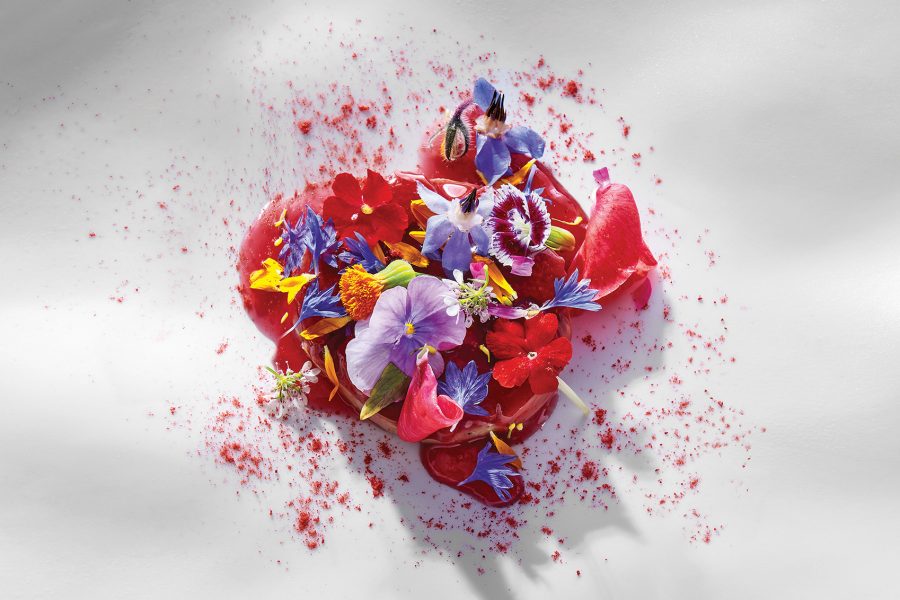It’s an entwined journey that began more than a century and a half ago. Following Japan’s Meiji Restoration in 1868, Japan opened its doors once more to Western influences – including the art of French cooking.
At the forefront was Louis Begeux, Japan’s first foreign head chef. Begeux set a foundation for Japanese apprentices who furthered their studies in France, returning with refined techniques and knowledge. Fast forward to the 21st century, and now Japanese chefs aren’t just studying in France: they’re staying, and creating a beautiful cultural synthesis. The food is often characterised by lighter sauces, delicate tastes and minimalist plating, echoing the subtleties of Japanese cuisine. These Parisian chefs are creating a unique cuisine that continues to evolve – and inspire.
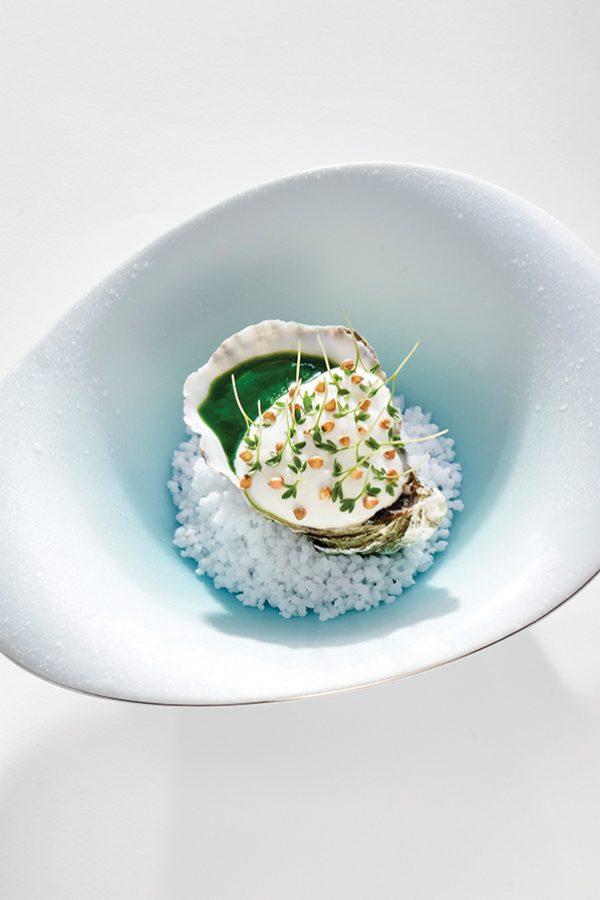
Credit: Richard Haughton
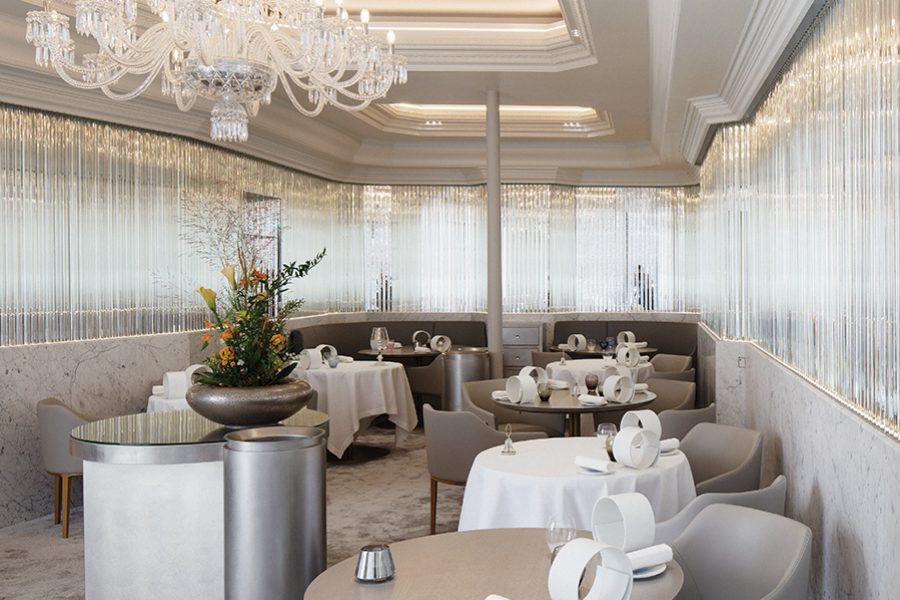
Credit: Richard Haughton
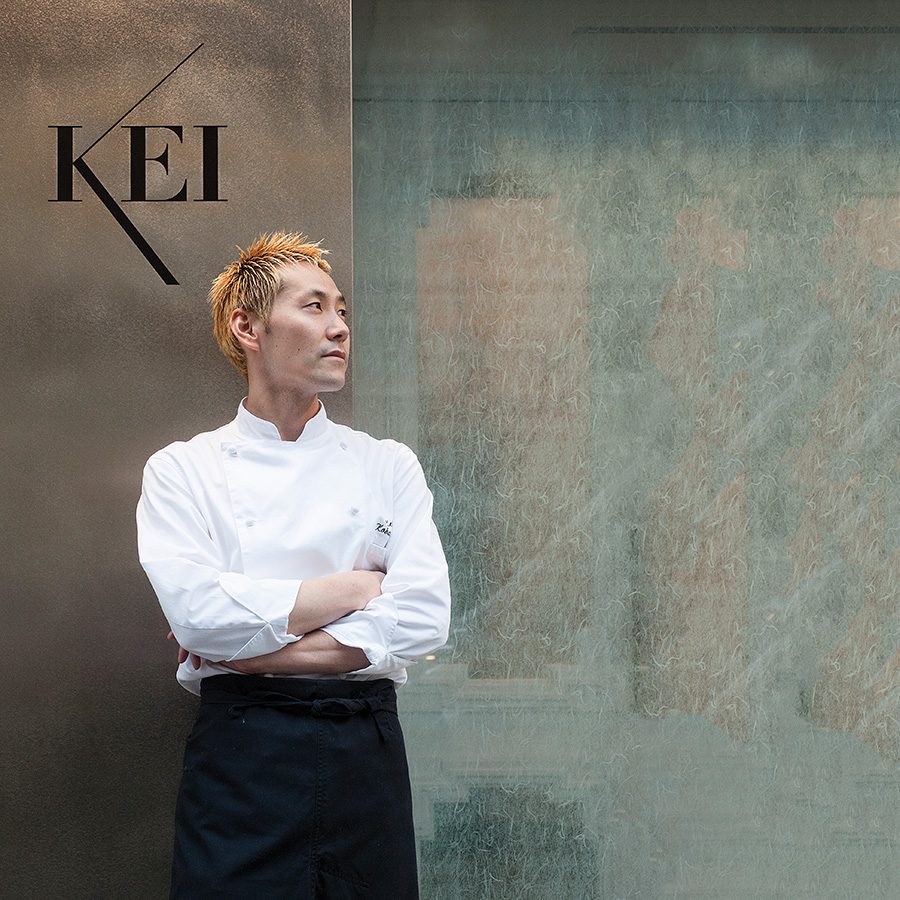
Credit: Thuries Gastronomie Magazine Pascal Lattes
Musical fare
“No matter in French or Japanese cuisine, the ingredients are the singers,” says chef Kei Kobayashi, the first Japanese chef to attain three Michelin stars in France – the birthplace of the coveted awards.
At his fine dining restaurant, Restaurant Kei , Kobayashi emphasises his role in transforming his ingredients into superstars by elevating them to “come alive” in the right presentation. His culinary style, underscored by a focus on aroma, elevates the dining experience, where each flavour is a deliberate, thoughtful note in a symphonic feast.
Kobayashi’s signature dish, “Garden”, embodies his quest for precision and elegance. This salad combines crisp vegetables and Scottish smoked salmon with a lemon emulsion and tomato vinaigrette, enriched by creamy mayonnaise. It’s garnished with herbs such as basil, shiso, dill and oak leaf, and finished with black olive crumbles. It’s a poetic celebration of seasonal ingredients, where intricate flavours blend seamlessly, each enhancing the other.
Despite his three stars, Kobayashi remains grounded, seeing the achievement as a milestone rather than the pinnacle of success. His ambition is to create a unique, global culinary language, akin to the distinctive style of his mentor Alain Ducasse. “I think right now I’m just at 40 per cent progress,” he muses, acknowledging the vast landscape of French cuisine still left to explore. His journey continues to push the boundaries of gastronomy as he crafts his own legacy.
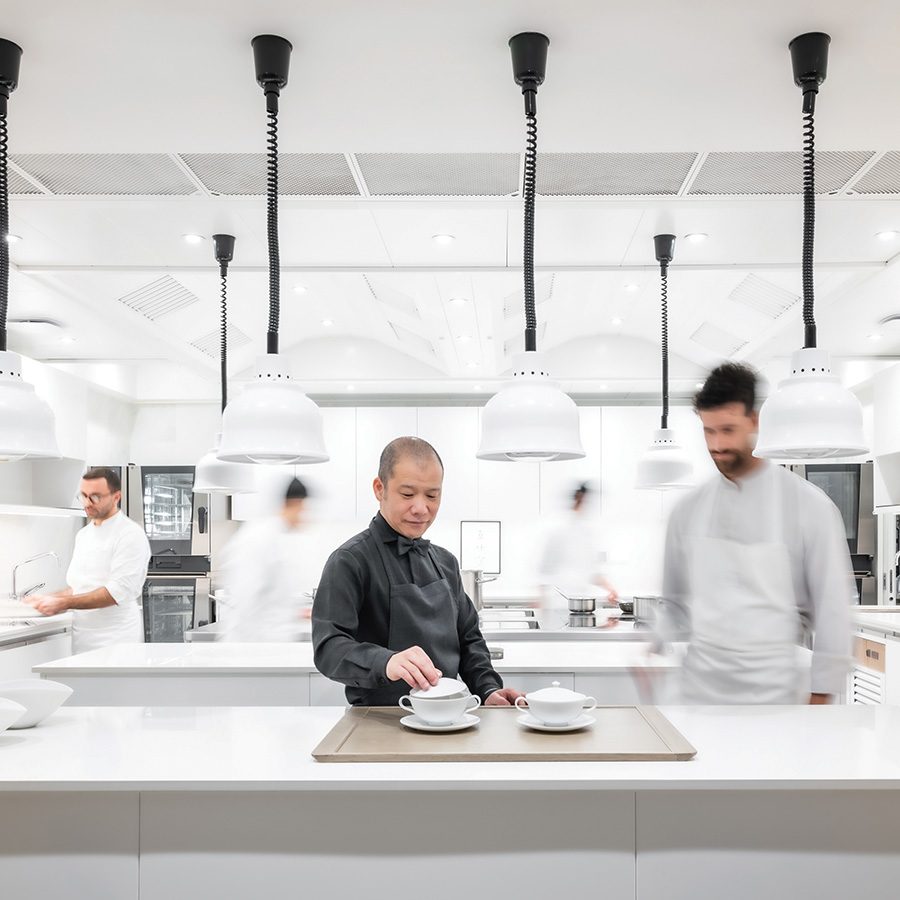
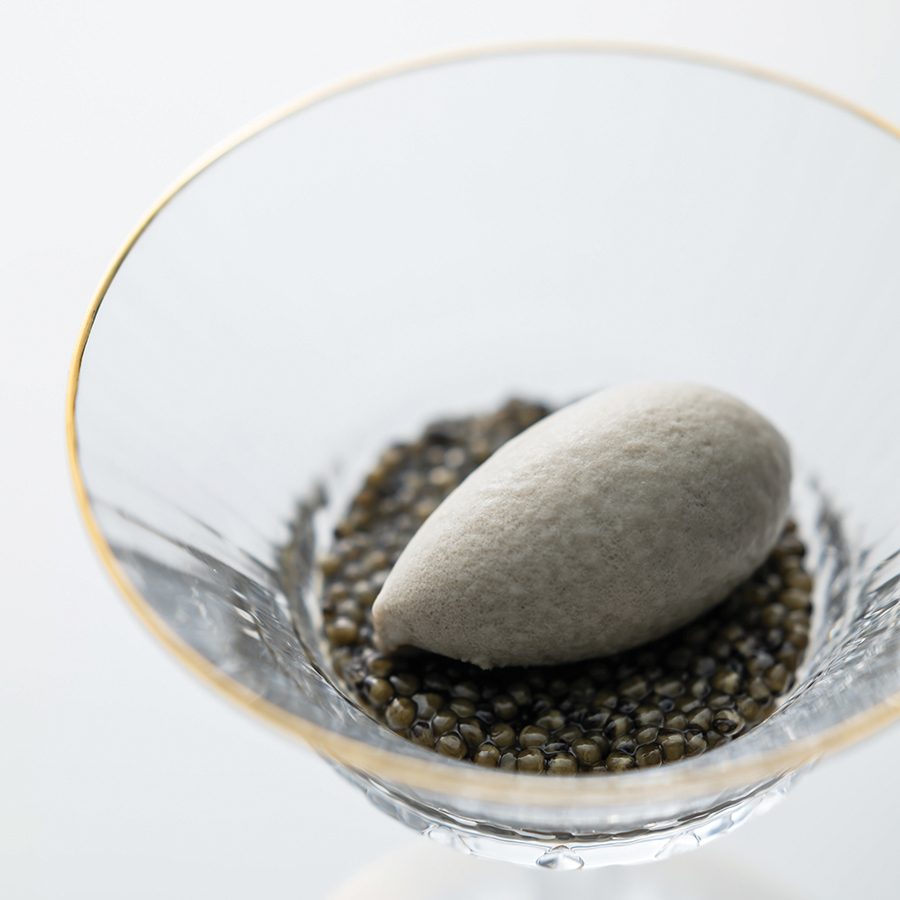
Transparent cooking
Hokkaido-born Shinichi Sato started his career in Japan, before moving to France in 2000. He quickly established himself, in 2011 becoming the first Japanese chef in the country to earn two Michelin stars, for his restaurant Passage 53. “I was surprised by the announcement,” he says. “Although my role remains the same, it has given me a motivating pressure to excel, as it seems to have raised people’s expectations of me.”
Last September marked a new chapter for Sato, with the opening of Le Restaurant Blanc in Paris’s 16th arrondissement. In collaboration with Japanese starchitect Kengo Kuma, Sato meticulously crafted every aspect of this elegant 30-seater restaurant, from the menu to the stylish, clean aesthetic and the impressive cellar of over 7,000 wines. The look of his new restaurant reflects his Japanese roots, with a bright, open kitchen and white-themed decor, symbolising the purity and simplicity that underlie his culinary vision.
Sato refrains from traditional French ingredients such as heavy butter and cream in favour of a “transparent” style of cooking – for instance, using Japanese ingredient kombu dashi stock to enhance flavours without overwhelming the palate. His dishes, characterised by clarity and lightness, avoid excessive decoration and focus on the essence of the ingredients instead. Take his oyster ice cream with Laphroaig whisky and Sologne caviar: the fresh umami of the ocean is elevated with a hint of peaty smokiness.
“My aim is not just to impress but to satisfy my diners,” he says. “I’ll let their contentment be the measure of my success.”
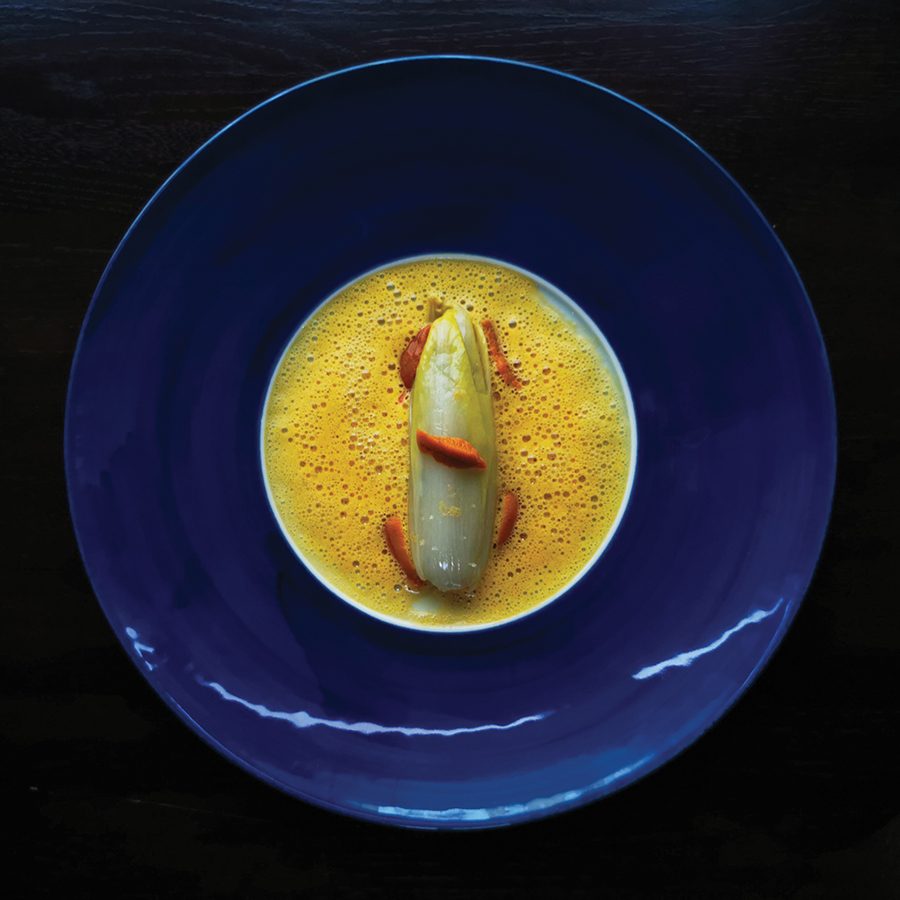
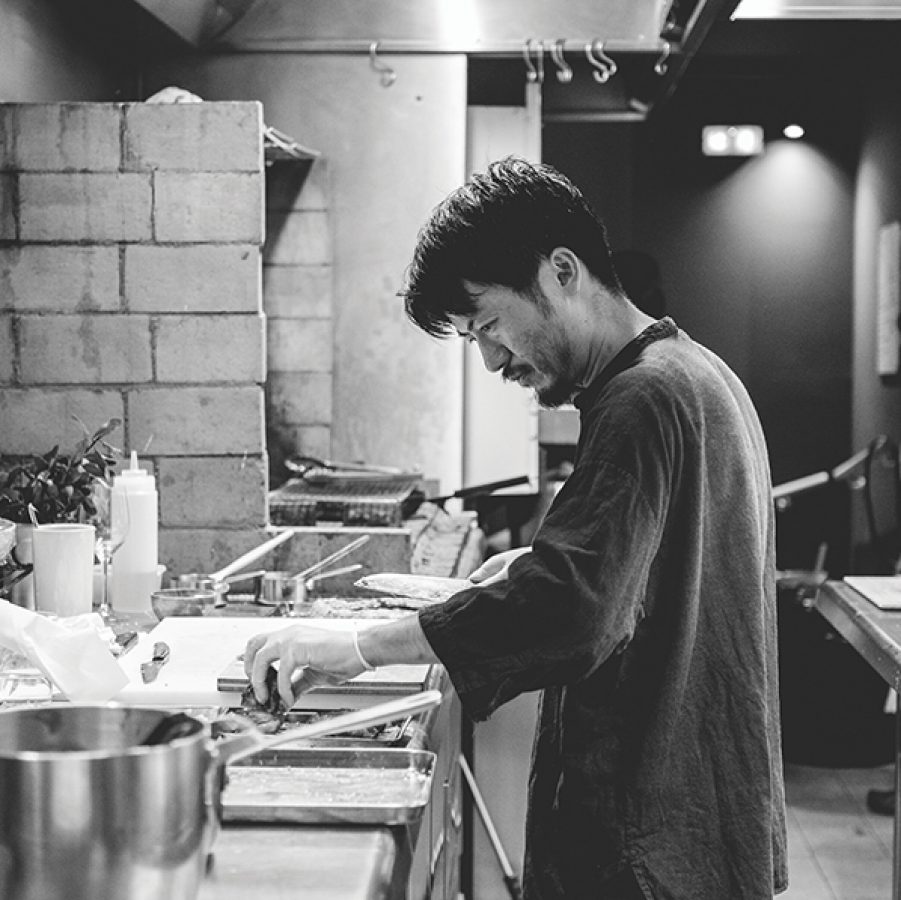
Credit: Marie Monsieur
Welcome to the maison
In Paris’s dynamic dining landscape, Sota Atsumi shines with his casual, sincere cooking. Arriving in France in 2005, Atsumi was captivated by Paris’s “dazzling charm and culinary richness”. After time spent working for Joël Robuchon and natural wine pioneer Pierre Jancou, in 2014 Atsumi turned the venerable Clown Bar bistro into a Parisian hotspot.
Blending his Japanese heritage with French technique, Atsumi prefers not to categorise his cuisine as French-Japanese fusion cuisine; instead, he sees it as “modern French”, infused with subtle Japanese nuances. In 2019, Atsumi brought it all to life with Maison , a restaurant with a homely, inviting, light-filled atmosphere. Here, his philosophy of using fresh ingredients to enhance natural flavours comes alive. “The most important thing is to find the right combination of fresh ingredients, and let them shine,” he explains.
His pigeon roasted in the wood oven stands out, showcasing his reverence for produce. This boldly presented dish features pigeon, with all parts expertly cooked – as bouillon, in the sauce and on the plate – highlighting rich, layered flavours and the precision needed to bring them to life.
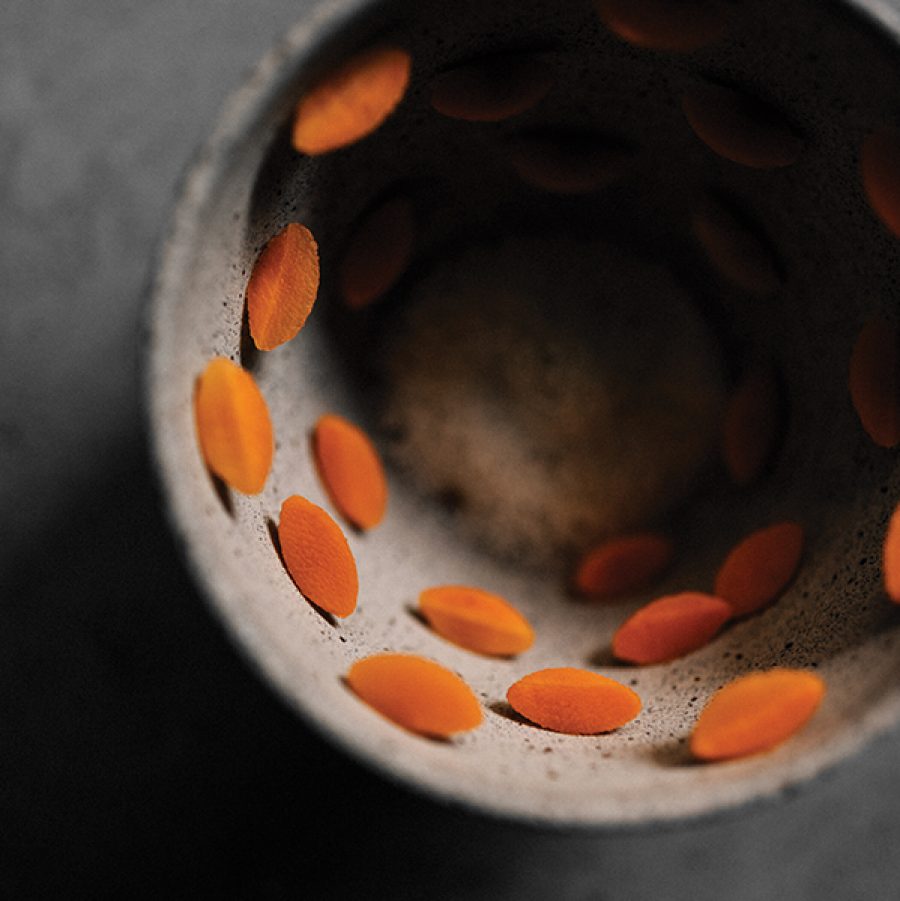
Credit: Padilla Magallanes
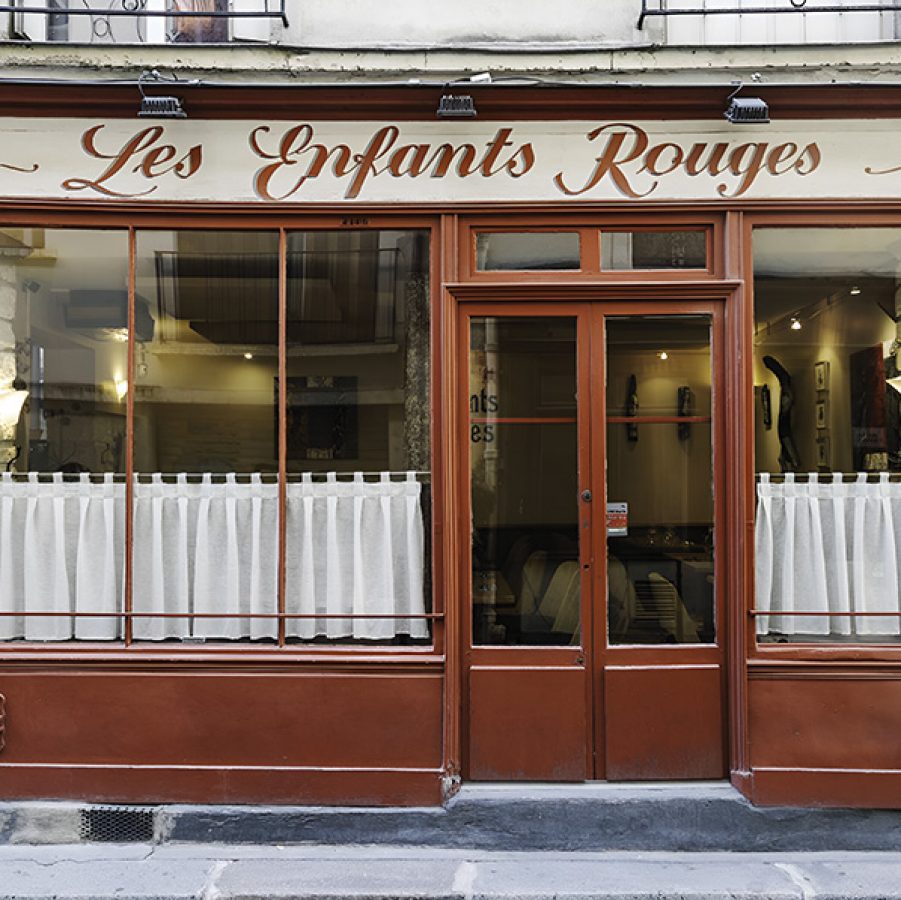
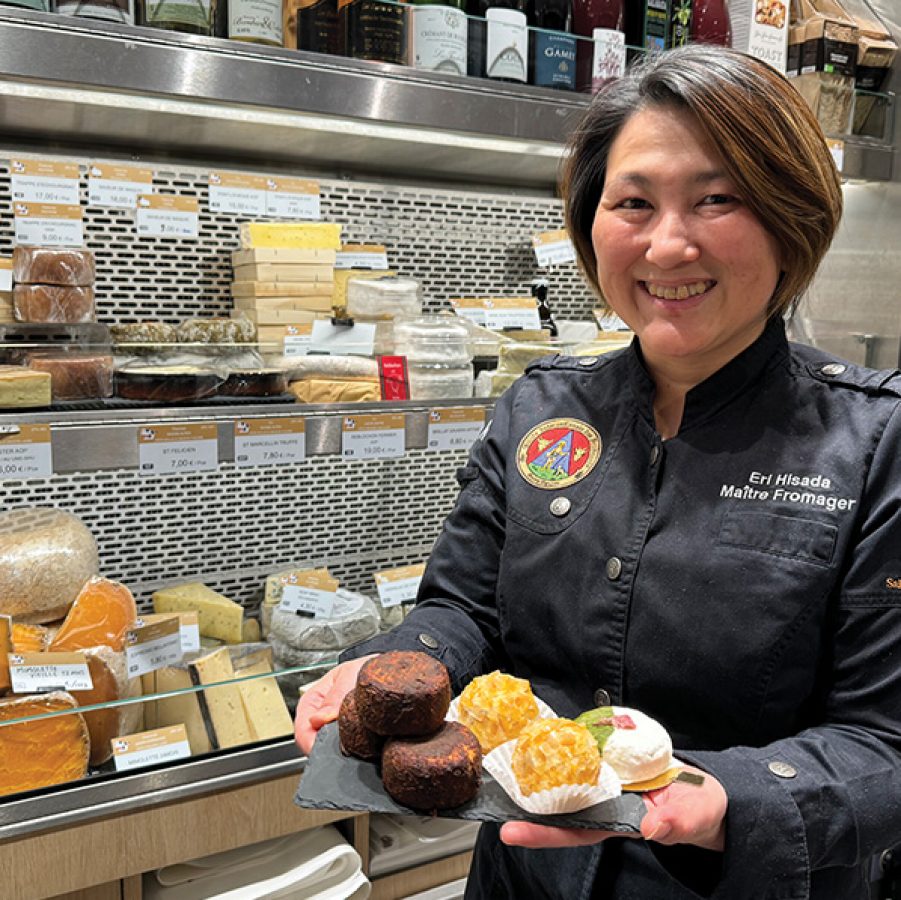
Top 5: Little Tokyo
Running through the 1st and 2nd arrondissements of Paris, the area surrounding the Rue Sainte-Anne is better known as “Little Tokyo Paris”. This area has a high concentration of Japanese businesses, boutiques and bistros.
1. Fromagerie Hisada
Eri Hisada fuses the thoughtful craft of French cheese-making with Japanese nuances. Her innovative cheeses , infused with flavours like yuzu, cherry blossom or miso, mirror her many cultural influences.

Credit: Laurent Fau
2. Mori Yoshida
Mori Yoshida studied with the masters, and now he brings his own blend of French and Japanese techniques to his eponymous pastry shop .
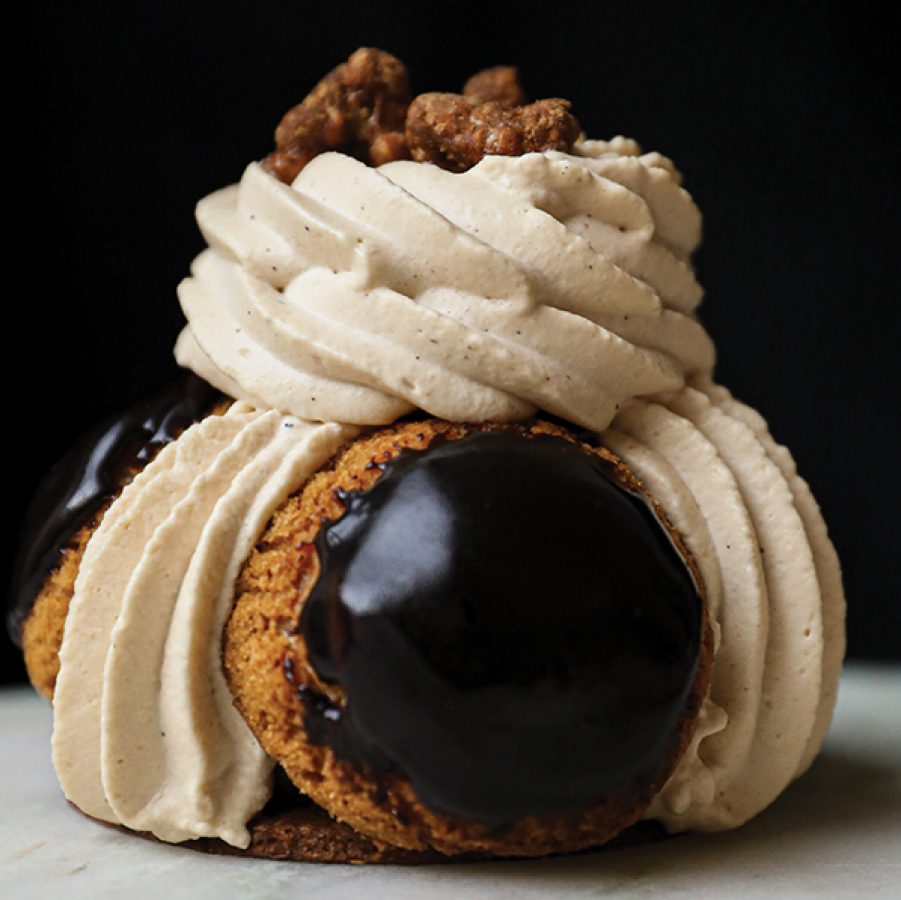
Credit: Aurore Nguyen
3. Pâtisserie Rayonnance
Yuki Hayato and Lumi Hachiya met while working at Paris’ Michelin-starred Pages restaurant: now they serve up specialities such as Saint-Honoré with hojicha.
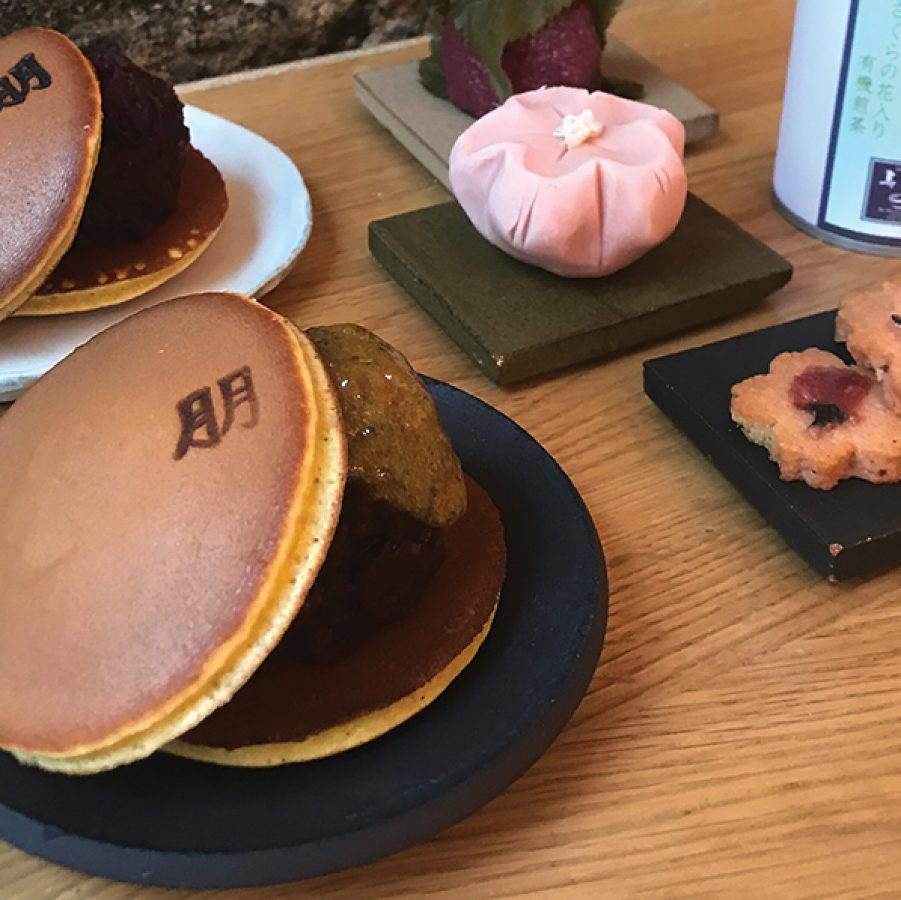
Credit: Tomo Dorayaki
4. Tomo
Innovative pastries merge the traditional Japanese dorayaki with French elegance.
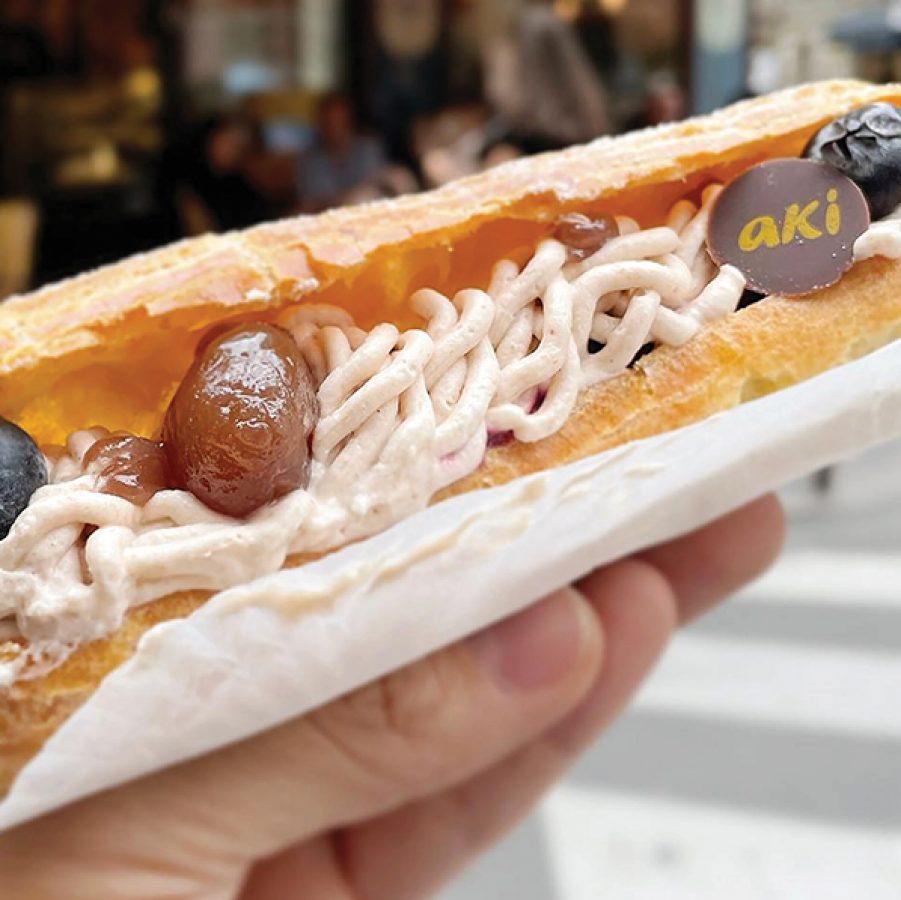
5. Mochi Mochi Aki
The Japanese melon bun gets creative French twists at this cute patisserie .
More inspiration
- China – the Chinese Mainland, Hong Kong SAR, Macao SAR and Taiwan Region
- Hong Kong SAR - English
- Chinese Mainland (China) - English
- Taiwan, China - English
- 香港特別行政區 - 繁體中文
- 中国內地 - 简体中文
- 中國台灣 - 繁體中文
- Africa
- South Africa - English
- Asia
- Bangladesh - English
- Korea - English
- Singapore - English
- Cambodia - English
- 한국 - 한국어
- Sri Lanka - English
- India - English
- Malaysia - English
- Thailand - English
- Indonesia - English
- Maldives - English
- ประเทศไทย - ภาษาไทย
- Indonesia - Bahasa Indonesia
- Myanmar - English
- Vietnam - English
- Japan - English
- Nepal - English
- Việt Nam - tiếng Việt
- 日本 - 日本語
- Philippines - English
- Australasia
- Australia - English
- New Zealand - English













